Biology,Grade 11th,University Preparation (SBI3U)


-
Name:Biology,Grade 11th,University Preparation (SBI3U)
-
Grade:Grade 11th
-
Prereq:Science,Grade 10th,Academic (SNC2D)
-
Code:SBI3U
-
Type:University Preparation
-
Credit Value:1
-
Develop Date:2021-04-01
-
Course Price:CAD $1300
-
Status:Active
Course Description:
The course highlights the topics to be covered in a very deep way. In this course, the theories and the scientific proofs for biodiversity will be discussed well. The course will put light on the microorganism and will describe their types along with their roles in daily life. The course also includes the evolution and the genetic processes to understand the process of reproduction at baseline. Moreover, this course puts light on the two major living beings in the environment e.g. plants and animals; we will discuss the system of them along with their normal functionalities and developmental processes.
Aims and Objectives:
- Define the term biodiversity; they will demonstrate the role of human activities in biodiversity.
- Define the extinct and endangered species and the human activities involving the extinct organisms.
- Evaluate the classification of the organisms based on taxonomy.
- Evaluate the term phylogeny and the phylogenic tree.
- Demonstrate the characteristics, mode of nutrition, and mode of reproduction of eubacteria.
- Demonstrate the characteristics, domains, mode of nutrition, mode of reproduction of archaea.
- Evaluate the role of viruses in the life of an organism, the diseases and the names of the disease-spreading virus.
- Demonstrate the process of vaccination and its advantages.
- Evaluate the kingdom Protista’s characteristics and the mode of living, mode of reproduction and mode of nutrients.
- Evaluate the introduction to the kingdom Animalia.
- Differentiate the respiratory system of the fishes and mammals, reptiles, amphibians and avian.
- Describe the digestive system types of the animals along with an example.
- Evaluate the circulatory system of all the classes of the animals.
- Evaluate the growth and development of plants.
- Describe the process of seed germination.
- Evaluate the whole process of the transport of sugars in vascular plants.
- Define the terms gene, chromosomes, alleles and genetics.
- Describe the law of segregations.
- Describe the pea plant experiments and flower experiments.
- Describe the process of the cell division e.g. mitosis and meiosis.
- Describe the types of chromosomal disorders. Give causes and chromosomal diseases.
Expectations:
- Biodiversity
Throughout this course, students will:
- Analyze the effects of various human activities on the diversity of living things and the species of the endangered and extinct species.
- Demonstrate an understanding of the diversity of living organisms in terms of the principles of taxonomy and phylogeny and the six kingdom system.
- Micro-organisms
By the end of this course, students will:
- Analyze the characteristics, mode of nutrients and mode of reproduction of eubacteria.
- Analyze the characteristics, domains, mode of nutrition and mode of reproduction of the kingdom archaea.
- Demonstrate the role of viruses and the process of vaccination along with its advantages and disadvantages.
- Evaluate the kingdom Protista’s organism’s mode of living, mode of nutrients and mode of reproduction.
- The Animals
By the end of this course, students will:
- Evaluate the introduction of the animals, the mode of their living and their classes.
- Evaluate the different types of the digestive system of the animals, along with the examples.
- Demonstrate the difference between the respiration process of fishes and other classes of organisms.
- Evaluate the components of the circulatory system and explain the circulatory system of a different organism.
- The Plants
Throughout this course, students will:
- Evaluate the importance of sustainable parts of plants and describe the whole anatomy of the plants.
- Evaluate the requirements of plants for growth and development and the process of the seed germination to the whole development of the plant.
- Describe the mechanism of the plant’s reproduction along with the explanation of the sexual parts of plants.
- Describe the process of transportation of the nutrients in the vascular plants, describe the transport of sugars.
- The Evolution and Genetics
Throughout this course, students will:
- Demonstrate the introduction of genetics and heredity. Demonstrate the definitions of gene, allele, chromosomes and genetics.
- Demonstrate the process of cell division. Evaluate the whole process of mitosis.
- Evaluate the process of meiosis 1 and meiosis 2.
- Demonstrate Mendel’s pea plant and the law of segregation.
- Evaluate the structural and numeric chromosomal disorders. Demonstrate the clinical chromosomal disorder and its causes.
Unit-wise Progression:
|
Unit
|
Title and Subtopics |
|
Unit 1 |
Biodiversity
- Hours: 12 |
|
Unit 2 |
Micro-organisms
- Hours :22 |
|
Unit 3 |
Animals
- Hours: 22 |
|
Mid-Term - Hours: 2 |
|
|
Unit 4 |
Plants
- Hours: 22 |
|
Unit 5 |
Evolution and Genetics
- Hours: 22 |
|
Culminating Activity – 5 Hours |
|
|
Final Term – 3 Hours |
|
|
Total – Hours 110 |
|
Teaching/Learning Methodologies:
The students are provided with almost all the material they would need to learn. The students will be provided with the whole resource of the course. The textbook will be attached with the course; the students will be able to download extra reading packs according to the lessons for the deep understanding of the concerned lesson. This course has almost all the things included for the learning of the students/learners as well as for the entertainment. This course includes the activities in the form of cumulative activities, moreover as the course would start the student will be given a specific lab access for every topic, which they need about. The students will be able to solve the scientific problems by applying the acquired knowledge from this course. The assessments for every unit, the assessment of every lesson will be checked and reports will be designed. The students will be given the full time access to ask the questions to the teacher about the lessons. Proper lectures for every lesson will be conducted. The student will have to give the reflection feedback for the previous lecture and then the teacher will start the next lecture. The student will be able to ask queries about the lesson at the end of the lecture
- Lesson plans
- PowerPoint presentations
- Videos
- Reading Packs
- Assignment for Learning
- Assessment of Learning
- Quiz
All of these are a cluster of downloadable and embedded files that will be provided to each candidate with the progression of the course.
E-Learning Approach:
E-learning is not only a training method but it is a learning method that is tailored to individuals. It is found that different terminologies have been used to define learning that takes place online which actually makes difficult to develop a generic definition.
E-learning includes the delivery of content via Internet, Intranet, and Extranet, satellite broadcast, audio-video tape, interactive TV and CD-ROM. The term implies that the learner is at a distance from the tutor or instructor, that the learner uses some form of technology.
With attention to this new system of education that is spreading across the globe its imperative that the content of such study programs are enhanced and modified to serve both the learner and the instructor well whilst dealing with the gap of conventional studying methodologies. Thus the courses promise its reader an experience full of engagement, student-concentric approach, personalization and Interaction. Using a wide array of multimedia tools, cloud based LMS and diverse repository of subject tailored audio-visual material that student can utilize and learn in a stimulated work environment where he’s in charge of his work hours.
Our e-learners paddle through these courses in the mediation of skilled mentors to the finish line with understanding of their subjects application into real world problems following a futuristic model of education.
Strategies for Assessment and Evaluation of Student Performance:
Assessment is the ongoing gathering of information related to the individual student’s progress in achieving the curriculum expectations of the course. To guide the student to his/her optimum level of achievement, the teacher provides consistent and detailed feedback and guidance leading to improvement. Strategies may include:
- Diagnostic assessment
- Formative assessment
- Summative assessment
- Performance assessment
- Portfolio assessment
- Rubrics
- Checklists
The final grade will be based on:
|
Weightage in Percentage
|
Categorical Marking Breakdown |
|
50% |
Course Work |
|
10% |
Mid Term |
|
10% |
Culminating Activity |
|
30% |
Final Exam |
|
Assessment of Learning
|
||
|
Student Product |
Observation |
Conversation |
|
Learning Logs (anecdotal) Assignment Pre-tests (scale/rubric) Quizzes (scale/rubric) Rough drafts (rubric) Graphic organizers (scale) Peer feedback (anecdotal/checklist) Reports (rubric) Essays (rubric) Webbing/Mapping (rubric/scale) Vocabulary notebooks (anecdotal) Visual Thinking Networks (rubric) Tests (scale/rubric) Exams
|
Self-proofreading (checklist) Class discussions (anecdotal) Debate (rubric) PowerPoint presentations (rubric) Performance tasks (anecdotal/scale)
|
Student teacher conferences (checklist) Debate (rubric) Peer-feedback (anecdotal) Peer-editing (anecdotal) Oral pre-tests (scale/rubric) Oral quizzes (scale/rubric) Oral tests (scale/rubric) Question and Answer Session (checklist) Online laboratory access for the concerned lessons(checklists)
|
Resources Required by the Student:
- Microsoft Suite (Word, Excel, Power-point etc.)
- A laptop, or Mac, or Android, or any other operating system functional enough to use the web browser and use online software.
- Curriculum Reference: The Ontario Curriculum, Sciences







